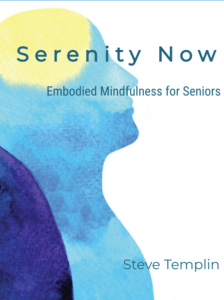We often lose clarity as the wear and tear of the day’s events take a toll on the integrity of our brain and nervous system. The afternoon is a common time to feel a drop in physical as well as mental energy and clarity. While many of us have learned to rely on food or drink to give ourselves a mental boost, there are more direct ways to retore brain balance.
The next time you feel that you’re losing your mental edge you can pause just long enough to restore order to your brain and nervous system. You can always add food or drink, but first, reset your nervous system directly.
We’ll often resist pausing and reseting and just hunker down and try harder. Staying busy often contributes to even more neurological disorder and less clarity. Trying to find clarity or creative solutions with an impaired, stressed-out brain is like trying to drive the interstate with a flat tire. It’s just not a viable plan.
Pause and Reset
The first step in creating more clarity is to realize that you’re beginning to struggle and then pause to reset your autonomic nervous system (ANS). The earlier that you notice your clarity and focus wavering the easier it will be to restore balance.
Next, we want to activate our body’s capacity for self-healing, or self-regulation. When we drop attention down from the head to the body and begin to notice sensations directly we activate a process termed interoception. We’re specifically activating a brain region called the insula and this initiates the self-regulation process.
More specifically, connecting with heart felt sensations while attending to the breath quickly and powerfully alters brain and autonomic nervous system function … for the better.
This previous step (especially with practice) helps us to feel more present and settled and restores our ability to see new options and to take more appropriate action.
I’ve conducted thousands of hours of Heart Rate Variability biofeedback sessions that confirm the following benefits of the following 5-step exercise you’ll see below:
- Calming, synchronized alpha waves across the cerebral cortex
- Enhanced heart-brain coherence
- Enhance left and right brain hemisphere balance
- Autonomic nervous system balancing (that’s the system that in charge of all of your organ functions)
- Shifting from danger and alarm brain centers to safety centers (shifting from the amygdala to frontal and prefrontal brain centers)
- Shifting from old, ingrained defensive reaction patterns based on threat to new options based on safety, trust, and love.
HeartMath’s Freeze Frame Technique
Here are some specific steps you can take to restore flagging energy and mental clarity. We’re going to activate the heart’s intrinsic nervous system (yes, the heart has its very own brain) and enjoy the benefits of increased Heart Rate Variabilty and heart-brain coherence.
1. Acknowledge a problem or issue and any attitudes or feelings about it.
2. Focus your attention on the area of your heart and do heart focused breathing. Imagine that your breath is flowing in and out of your chest or heart area, breathing a little slower and deeper than usual. Breathing in 5 seconds and out five seconds is perfect, but don’t strain.
3. Make a sincere attempt to activate a positive or renewing feeling such as appreciation or care for someone or something in your life. (This step adds coherence or order to your brain and nervous system so you can see issues from a broader, more balanced perspective.)
4. From this more orderly, objective place, ask yourself what would be a more effective or efficient attitude, action, or solution.
5. Quietly observe any subtle changes in perceptions, attitudes, or feelings. Commit to sustaining beneficial attitude shifts and then act on new insights.
Once you become familiar with the process the five quick reference steps are:
- Acknowledge
- Heart-focused breathing
- Activate a positive or renewing feeling
- Ask
- Observe and act
To sum up, our systems are designed to be self-balancing, self-renewing, and self-healing. Our cultural predisposition is to be imprisoned in our intellect in response to ongoing stress, early trauma, or emotional neglect.
In order to activate our self-regulating mechanisms we must get out of our heads and connect with the felt experience of our bodies. The HeartMath research is showing that one of the more effecient ways of connecting with bodily experience is to connect with the heart. Connecting with heart felt feelings creates a neurological signal of safety that begins to reduce the stress response while initiating self-healing mechanisms.
HeartMath science is confirming what sages and indigenous people have said about the wisdom of the heart for centuries.


 Steve is a retired Doctor of Oriental Medicine, Acupuncture Physician, and HeartMath Trauma-Sensitive Certified Practitioner with over 35 years of clinical experience in the fields of Energy Medicine, Energy Psychology, and Biofeedback.
Steve is a retired Doctor of Oriental Medicine, Acupuncture Physician, and HeartMath Trauma-Sensitive Certified Practitioner with over 35 years of clinical experience in the fields of Energy Medicine, Energy Psychology, and Biofeedback. 